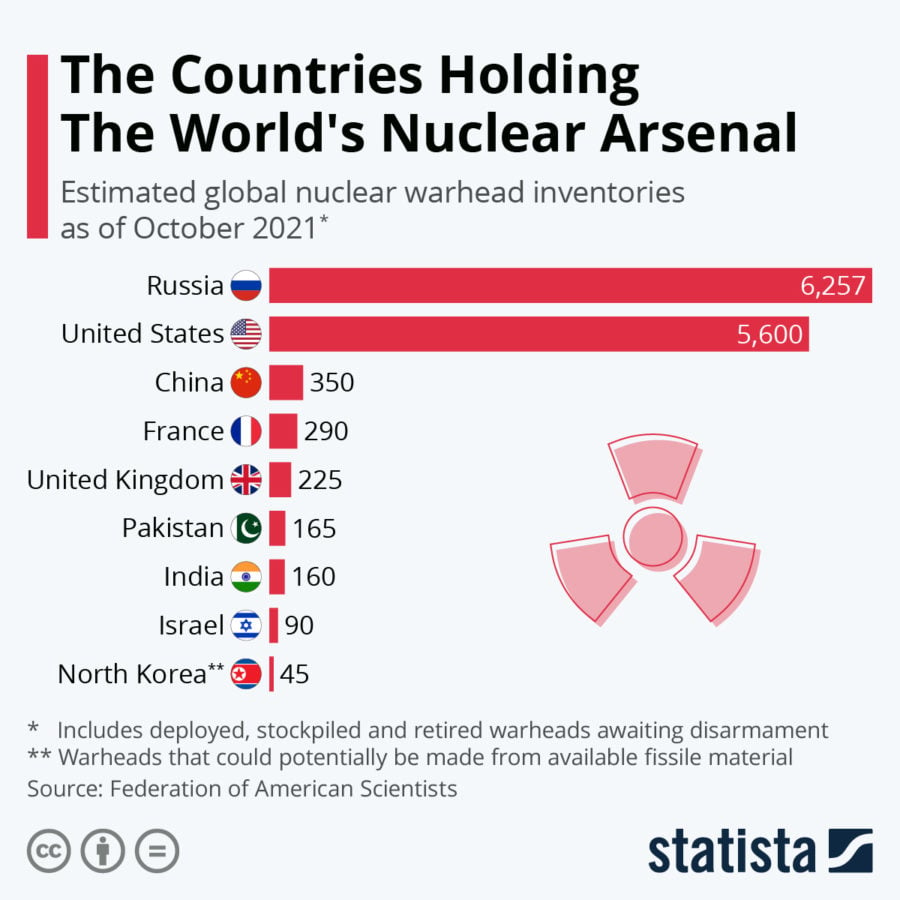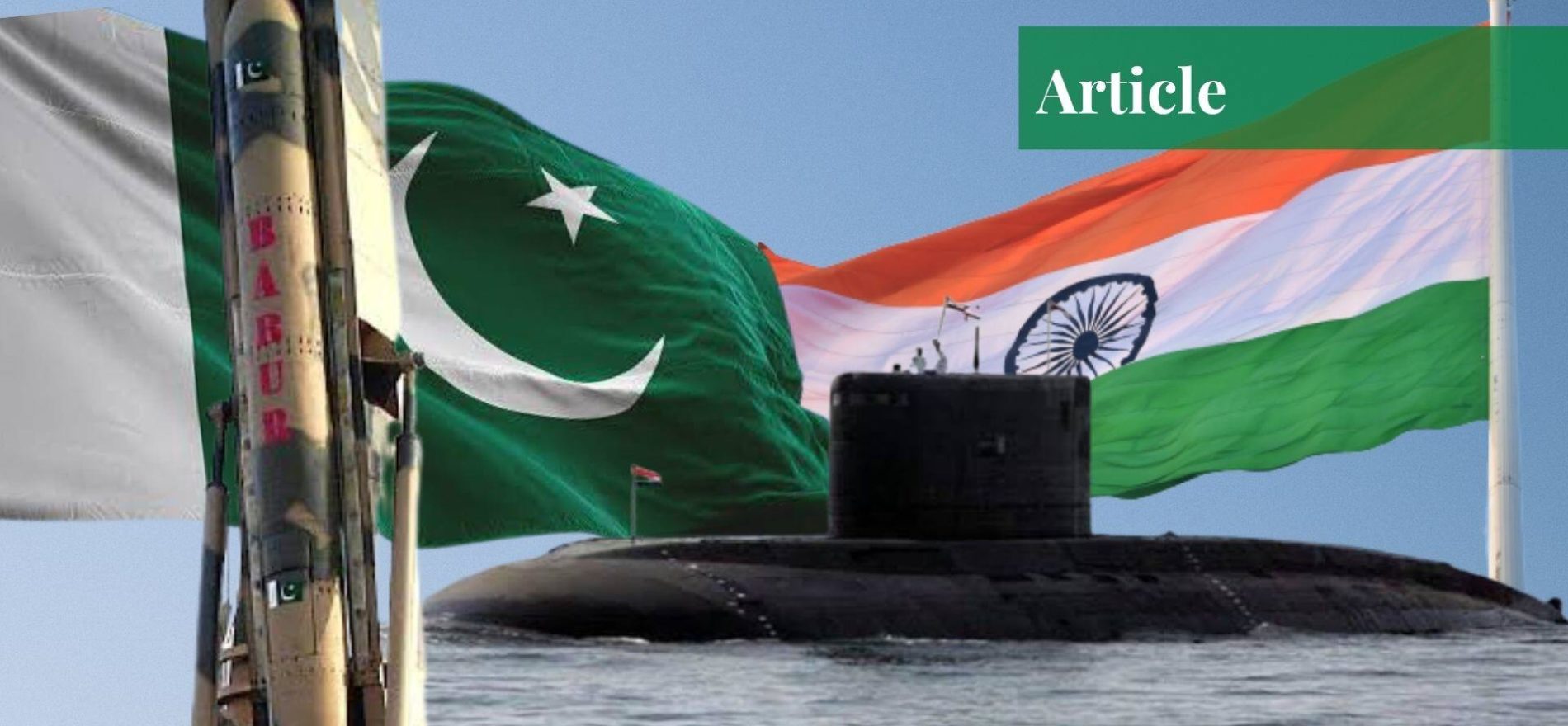Mr. Rauf Khalid is a student at National Defense University, Islamabad. He is currently pursuing a bachelor's degree in strategic studies. He has been a research intern at SASSI University. His areas of interest include traditional and non-traditional security issues, national security, the threat perception of Pakistan, and international politics, specifically of East Asia, South Asia, and the Middle East. He can be contacted at [email protected]
Second Strike Capability
Second strike capability refers to the attempt by nuclear-weapon states to secure their nuclear installations from the first strike by an adversary and make them applicable for retaliation against that specific hostile act. The prime focus of second strike capability is to deter the enemy from attempting a first strike. In the contemporary world, a nuclear submarine is considered the most reliable source of assuring second strike capability.
The Nuclear Dynamics of India & Pakistan
Pakistan shares a contentious history with India since its independence; all the capabilities of Pakistan are intended for India. Since the advent of nuclear weapons in South Asia in 1998, both India and Pakistan have been involved in a nuclear arms race, which has led to the need for the attainment of second strike capability on both sides. India showed interest in the nuclear triad since the very early ages of its nuclearization mainly because it believes in full-spectrum deterrence.

On the other hand, Pakistan believes in credible minimum deterrence, which stopped Pakistan from attempting to establish a nuclear triad in the early stages. However, India managed to attain second strike capability by the development of a nuclear-powered submarine equipped with ballistic missiles (SSBN) – the INS Arihant.
After the development of the INS Arihant, it was inevitable for Pakistan to absorb the asymmetry in the naval domain against India. The consequence of this is the instability in the region. In response, Pakistan went for the development of the Babur 3 cruise missile, which is a submarine-launched missile and declared itself to be qualified for the second strike capability.
How Viable is Pakistan’s Second Strike Capability?
Pakistan’s Conventional Submarines
The proportionality of the credibility of second strikes of Pakistan and India is in question because there is an asymmetry between an SSBN and a submarine-launched cruise missile (SLCM). Hence, Pakistan’s second strike capability lacks credibility, and needs more furtherance, since just modifying a conventional submarine and equipping it with cruise missiles cannot effectively respond to the second strike capability of India’s INS Arihant.
The question mark on the credibility of Pakistan’s second strike capability refers to the acquisition of a nuclear submarine. A conventional submarine is not able to sustain underwater survivability for a long term and needs to surface after a specific period of time for logistical purposes.
Secondly, conventional submarines work on diesel engine motors and therefore, are unable to hide and deceive the enemy sonars due to the sound vibrations. Moreover, Pakistan has modified only a single type of submarine, which alone is not able to counter the Indian aggression; it needs a crew of more submarines. So, the modified submarine of Pakistan is not able to pose a credible threat to India. Resultantly, making the deterrence compromised.
Babur 3 Cruise Missile & the Significance of NC3
The Babur 3 missile is claimed as the main component of Pakistan’s second strike capability. The operational range of Babur 3 is 450km, which means it can reach the coastal cities of India but not its pivotal territories. In case India deploys its nukes outside the 450km range of Babur 3, Pakistan wouldn’t be able to perform a second strike against India. This job can be done effectively by a medium-range ballistic missile (submarine-based), in order to pose a credible posture of second strike deterrence.
Another very important factor of the second strike capability of a country is NC3, meaning command and control along with communication. The real-time information gathering in war scenarios and its transformation to the deployed submarine is very significant in maintaining deterrence. The triggering of a second strike is automated by the NC3, along with the given hierarchy of command and control given to the commanding officer and the executive officer of the submarine.
The operational command is dependent on the decision of the commanding officer and the executive officer of the submarine. According to experts, Pakistan comparatively lacks in this domain as well. The launching of Babur 3 missiles for the purpose of second strike capability requires a strategic NC3, but Pakistan still relies on conventional command and control systems that are not fit for nuclear operations.
Any miscalculation can lead to the accidental triggering of the nuclear arsenal, resulting in a global catastrophe. Hence, when it comes to maintaining deterrence against India, Pakistan has to face another challenge due to the lack of advanced strategic command and control systems.
Opting for Full-scale Deterrence
In support of the above-mentioned arguments, it can be deduced that Pakistan’s second strike capability is not compelling and unable to pose a reasonable threat to the massive Indian naval expansion. Pakistan needs to invest in building an SSBN in order to effectively deter the enemy and counter India’s INS Arihant. Without that, the challenges and limiting factors of the present second strike capability cannot be covered.
Instead of relying on short-range SLCMs, Pakistan needs a long-range submarine-launched ballistic missile (SLBM) that covers the major territories of India. Considering the small economy of Pakistan, the other policy option for Pakistan is to propose the agenda of declaring the Indian Ocean Region as a “nuclear-weapons-free zone” on international platforms, in order to haunt the aggressive Indian naval posture.
Pakistan’s involvement in the China-Pakistan Economic Corridor (CPEC) and the investments in the Gwadar Port demand that Pakistan maintain a hold in some portions of the Indian Ocean. This can be considered as one of the reasons for opting for full-scale deterrence against India in the naval domain. The protection and security of these economic hubs along with Pakistan’s Sea Lines of Communication (SLOC) is also very important for preventing the enemy from using these unsecured spots as weak points in case of any misadventure.
Moreover, the development of SSBN by Pakistan also has implications for regional stability. The conventional asymmetry between the two rival states of South Asia demands credible deterrence stability on both sides. The development of credible and assured second strike capability on both sides will enhance deterrence, lowering the chances of failure of deterrence.
If you want to submit your articles, research papers, and book reviews, please check the Submissions page.
The views and opinions expressed in this article/paper are the author’s own and do not necessarily reflect the editorial position of Paradigm Shift.



















